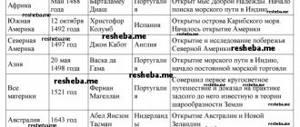Lesson topic: Newton's Laws
Lesson objectives: Systematization of knowledge about Newton's laws.
Lesson objectives:
- Cognitive: Combine the studied laws into a system of ideas about the cause of mechanical movement. Test problem solving skills on this topic.
- Developmental: Develop skills in presenting a complete and correct answer to a study question. Formation of skills in analyzing educational material.
- Educational: Emphasize the cognitive and ideological, practical and educational significance of Newton's laws.
Lesson type: Combined with the use of ICT.
Lesson plan:
- Organizational moment – 3 min.
- Group work – 20 min.
- Presentation -5 min
- Problem solving – 10 min
- Summarizing. Reflection on activities in the lesson. – 5 min.
- Homework assignment – 2 min.
During the classes
1. Introductory and motivational part
Hello guys! I hope that you and I will work fruitfully in class today. And I would like this lesson to be interesting for everyone.
Slide No. 1
What do you think we will talk about today?
(There is a discussion of the slide pictures).
Slide No. 2
Lesson topic: Newton's Laws
Today we will work in groups. You must split into groups. (Draw lots)
Take your seats.
2. You need to create a cluster and present it. (20 minutes)
3. Presentation.
4. Problem solving
Slide No. 3
1. How to explain that a running person, having tripped, falls in the direction of his movement, and having slipped, falls in the direction opposite to the direction of his movement?
Solution: This phenomenon is easily explained based on Newton's first law. Running Man. Stumbling, he falls in the direction of his movement. Because at the same time, a person’s legs slow down their movement. And the body retains its previous state of motion by inertia. While the legs begin to slide forward faster, the person falls backward.
Slide No. 4
2. A parachutist falls with a constant absolute speed. What is the magnitude of the air resistance force during this movement?
Solution: The parachutist’s movement is uniform and linear, therefore, based on Newton’s 1st law, all forces acting on the parachutist are compensated. Since the parachutist moves under the influence of gravity, the force of air resistance is equal in magnitude to the force of gravity of the parachutist and is oppositely directed.
Slide No. 5
3. Under the influence of a force of 20 N, a material point moves with a = 0.4 m/s2. With what acceleration will the point move under the influence of a force of 50 N?
Given:
F1 = 20 H
a1 = 0.4 m/s
F2 = 50 H
Solution:
The motion of a material point is uniformly accelerated.
According to Newton's second law, we can determine the mass of a material point.
m=
m=
=
=
Answer: a2 = 1 m/s
Slide No. 6
4. Two identical boats are moored to the pier. Boatmen are pulled to the shore using ropes. The opposite end of the first rope is tied to a post on the pier; the opposite end of the second rope is pulled by a sailor standing on the pier. All three put in the same amount of effort. Which boat will arrive first?
Solution: Both boats will dock at the same time. According to Newton's third law, every action has an equal and opposite reaction. With what force the boatmen pull on one end of the rope, the same force the other end of the rope exerts on the pole and on the sailor. In other words, the pole “pulls” the end of the rope with the same force with which the sailor standing on the pier pulls it.
Slide No. 7
5. A tractor, the traction force of which on the hook is 15 kN, imparts an acceleration of 0.5 m/s2 to the trailer. What acceleration will be imparted to the same trailer by a tractor developing a traction force of 60
Solution. As follows from Newton's second law, acceleration is proportional to the force acting on the body. Therefore, a tractor developing a traction force of 60 kN. Which is 4 times more than 15 kN. Will give the trailer 4 times greater acceleration, i.e. 2 m/s2.
5. Summarizing. Reflection on activities in the lesson
Summing up the lesson. Grading.
The purpose of our lesson today was to repeat, generalize, consolidate and systematize Newton's laws. How are these laws formulated? (Answers.) At a qualitative level, by performing various experiments, we were convinced that these laws are correct, that they “withstood the test of experience.” From Newton's biography we know that at first he was a very mediocre student at school. And then one day he was offended by the best student in the class. Newton decided that the worst revenge for the offender was to take away his place as the first student. Newton's dormant abilities awoke, and he easily eclipsed his opponent.
The awakened genie of knowledge cannot be hidden again in a dark, moldy bottle. From that happy episode for world science began the process of transforming a modest English schoolboy into a great scientist.
I would like to hope that today’s lesson will also awaken your thirst for new knowledge, because the “great ocean of truth” still lies unexplored before you.
Recording homework.
Lesson summary Newton's Laws
Municipal educational institution Pustoshenskaya secondary school, Shuisky district, Ivanovo region
Kanaicheva Maria Viktorovna, physics teacher.
General lesson on the topic: “Newton’s Laws”
The purpose of the lesson
: create conditions for generalizing and consolidating the knowledge acquired on the topic “Newton’s Laws”;
- teach to see the manifestations of the studied patterns in the surrounding life;
— improve skills in solving qualitative and calculation problems;
— improve skills in conducting physical experiments;
— broaden students’ horizons, develop communication skills, and develop cognitive interest in the subject.
Tasks:
continue learning to work in pairs; ability to apply knowledge in non-standard situations; realize the creative abilities of students.
Lesson type:
generalizing (using ICT)
Forms of student activity:
frontal, individual, pair work.
Equipment:
computer, multimedia projector, screen, devices for demonstrating experiments and experimental work of students, teacher’s presentation, student presentations “Newton’s Laws in Literature”, “Newton’s Laws in Nature and Technology”, portrait of Newton.
During the classes:
I. Organizational moment
. Teacher's opening speech.
There are few names and books in history that span centuries and even millennia and constantly influence the development of culture, technology and science.
The archives of science include Ptolemaic systems, caloric and much more. But there are scientific discoveries that turn out to be suitable for solving modern practical problems, and this means that they are reliable, because they have passed the most severe test - the test of time. Our lesson is dedicated to these great laws of physics. We will find out what laws we will talk about today by solving the crossword puzzle.
II. Solve the crossword puzzle
. (Slide No. 2)
1. Vector connecting the initial position of the body with its subsequent position (displacement)
2. A vector quantity that changes only as a result of the action of a force on the body. (speed)
3. A force that produces the same effect on a body as several simultaneously acting forces. (resultant)
4. Trajectory length (path)
5. A device that measures the speed of movement. (speedometer)
6. A physical quantity characterizing the rate of change in movement speed. (acceleration)
7. Device for measuring force (dynamometer)
Newton is the greatest scientist not only of his time, but also of history. He studied the nature of light, built a reflecting telescope, but Newton’s most important merit is that he derived the three laws of mechanics that govern the movement of bodies in the Universe.
So, today our lesson is devoted to “Newton’s Laws”.
During the lesson we will repeat the laws of motion, consolidate knowledge when solving problems, show the connection of laws with life, and consolidate the skills of conducting a physical experiment.
Let's remember what these laws say.
III
Updating knowledge
1) What movement is called movement by inertia?
2) What reference systems are called inertial?
3) Why are uniform rectilinear motion and the state of rest physically equivalent and interchangeable only in ISO?
4) Formulate Newton’s 1st law.
5) What physical quantity characterizes the absence or presence of external influence?
6) In what units is force measured?
7) What physical quantity is a measure of inertia?
 Name the basic unit of mass.
Name the basic unit of mass.
9) Formulate Newton’s 2nd law.
10) Why does resistance arise from the particle when a body interacts with a particle?
11) Formulate Newton’s 3rd law.
12) Why is it that when a passenger car collides with a loaded truck, the damage to the passenger car is always greater than to the truck?
13) With what force do you attract the Earth to you?
IV.
Features of Newton's laws.
Choose words related to the law
. (Cards with words are located on the magnetic board; students take turns going to the board and filling out the table)
| Newton's 1st law | Newton's 2nd law | Newton's 3rd law |
|
|
|
V.
Physics in pictures
(Slide No. 3)
Assignment: explain the motion of bodies using Newton's laws.
VI.
Museum of Physics “The schoolchild who independently carries out experiments knows physics well” P. L. Kapitsa.
I invite you to visit the Museum of Physics. Here are objects with which we can demonstrate the basic laws of motion. But for this we need a “tour guide”.
(On the demonstration table there are: carts, to one of which a steel plate is attached; a ball; thread pendulums; an inclined plane. One student goes to the board and prepares a demonstration).
While the “tour guide” is preparing, students complete the task “Is the statement true?”
"Is the statement true"
(Slide No. 4)
1. If there are no actions on the part of other bodies on a given body or they are compensated, then the body can be at rest, move with constant speed, or move with constant acceleration.
2. A body that is not affected by other bodies is called free.
3. Mass is a scalar physical quantity that characterizes the inertia of a body.
4. The product of mass and acceleration is equal to the sum of the forces acting on the body.
5. A reference system where a body moves uniformly and in a straight line is called non-inertial.
6. The forces with which bodies act on each other are not of the same nature, are equal in magnitude and are directed along the same straight line in opposite directions.
7. Any mechanical process in different inertial reference systems will proceed differently.
8. Inertia is the property of bodies to maintain their speed or rest.
9. The quantitative measure of the action of bodies on each other, as a result of which the bodies receive acceleration, is called force in mechanics.
(While the students were completing the task, the “guide” prepared demonstrations. The “guide” demonstrates experiments).
VII.
Check yourself
. Each student receives a self-control test.
After finishing the work, the correct answers and evaluation criteria are projected on the screen. The guys check their work and grade themselves according to the criteria.
| TS. Option 1 | TS. Option - 2 |
| 1. The principle of relativity was first formulated by: A. Newton B. G. Galileo V. Aristotle 2. Which of the following is a unit of speed? A. m/s B. m/s2 C. N 3. The reference frame is connected to the car. It can be considered inertial if the car A. moves uniformly along a straight section of the highway; B. accelerates uniformly along a straight section of the highway; V. moves uniformly along a winding road. 4. The resultant of all forces acting on the body is zero. What is the trajectory of this body? A. Parabola B. Line C. Circle 5. How many times must the force acting on the body be changed in order for the acceleration to decrease by 3 times? A. increase by 3 times; B. decrease by 3 times; B. increase by 2 times. | 1. Inertia is called... A. the property of bodies to maintain speed; B. change in the speed of a body under the influence of other bodies; B. the phenomenon of conservation of the speed of a body in the absence of the action of other bodies on it. 2. Which of the following is a unit of measurement for acceleration? A. m/s B. m/s2 C. N 3. The reference system is rigidly connected to the elevator. Will it be inertial if the elevator... A. falls freely; B. moves uniformly upward; V. moves slowly downwards. 4. How are changes in speed and inertia of a body related? A. If the body is more inert, then the change in speed is greater; B. If the body is more inert, then the change in speed is less. B. The change in the speed of a body does not depend on its inertia. 5. How many times must the body mass be changed for the acceleration to increase by 3 times? A. increase by 3 times; B. decrease by 3 times; B. reduce by 2 times. |
VIII.
Problem solving
“A man knows physics if he knows how to solve problems” Enrico Fermi.
a) “Think and answer” Solving qualitative problems (Slide No. 5,6,7)
b) “Let’s solve” Solution of a graphic problem (at the board) (slide No. 
c) Solving calculation problems (performing differentiated independent work using cards
| Independent work. Option 1. | Independent work. Option – 2. |
| Level A 1. What is the force that imparts an acceleration of 0.4 m/s2 to a body weighing 3 kg? 2. With what acceleration did a jet aircraft weighing 50 tons move during takeoff? The thrust force of the engines is 80 kN. 3. A moving car in the horizontal direction is subject to an engine traction force of 1250N, a friction force of 600N and an air resistance force of 450N. What is the resultant of these forces? Level B 1. A skier weighing 60 kg, having a speed of 36 km/h at the end of the descent, stopped 40 s after the end of the descent. Determine the force of resistance to its movement. 2. A bullet weighing 7.9 g flies under the influence of powder gases from a barrel bore 45 cm long at a speed of 54 km/h. Calculate the average pressure force of the powder gases. Neglect the friction of the bullet against the walls of the barrel. 3. An electric locomotive develops a traction force of 700 kN. What acceleration will it impart to a train weighing 3000 tons if the resistance force to movement is 160 kN? | Level A. 1. A trolley weighing 200 kg moves with an acceleration of 0.2 m/s2. Determine the force imparting this acceleration to the trolley. 2. What is the acceleration with which a body of mass 3 kg moves if a force of 12 N acts on it? 3. The vessel is towed by three barges connected in series. The water resistance force for the first barge is 9000N, for the second – 7000N, and for the third – 6000N. The water resistance for the vessel itself is 11000N. Determine the traction force developed by the ship when towing these barges, assuming that the barges move uniformly. Level B 1. An empty truck weighing 3 tons began to move with an acceleration of 0.2 m/s2. What is the mass of this car together with its load if, with the same traction force, it starts from rest with an acceleration of 0.15 m/s2? 2. A friction force of 16 kN acts on a car weighing 2 tons. What is the initial speed of the car if its braking distance is 50m? 3. A boy weighing 50 kg, sledding down a hill, drove along a horizontal road to a stop, a distance of 20 m in 10 s. What is the friction force acting on the sled? |
IX. Physical education minute.
“I don’t know how I may appear to the world, but to myself I seem like a boy playing by the sea, who managed to find a more beautiful pebble than others: but the ocean of the unknown lies before me.”
According to Newton, he discovered his laws playfully, he simply paid more attention to the world around him, full of the unknown. And now we’ll play with you a little. And the game is called "Silent Movie"
Picture:
- You are a passenger on a bus that makes a sharp right turn;
- Newton's second law;
- Newton's third law;
- While walking to school, you tripped;
- You slipped during icy conditions.
X.
“Trust, but verify
!” Performing experimental work.
Students perform experimental work.
The first group of students checks Newton's first law, the second group (more prepared students) checks Newton's second law, the third group checks Newton's third law. After completing the experimental work, students voice their conclusions.
XI.
Drawing up a summary table
(Slide No. 9)
| Newton's first law | Newton's second law | Newton's third law | |
| Physical system | Macroscopic body | Macroscopic body | Two body system |
| Model | Material point | Material point | System of two material points |
| Described phenomenon | State of rest or uniform rectilinear motion | Accelerated movement | Interaction of bodies |
| The essence of the law | Existence of inertial FR | The interaction determines the change in speed, i.e. acceleration | The forces of action and reaction are equal in magnitude and opposite in direction. |
| Examples of manifestation | The movement of a spacecraft far from the Earth's surface. | Movement of planets, falling bodies; acceleration and braking of a car. | Interaction of bodies: Sun and planets; car on the surface of the earth |
ISO boundaries. Macro and mega world. Movement at speeds much lower
variability of the speed of light.
XII.
Creative works of students.
a) Newton's laws in literature
b) Newton's laws in nature and technology
XIII
.
Conclusion.
Almost three centuries have passed since Newton established the basic laws of motion. During this time, the laws were tested many times under different conditions, and each time the results obtained confirmed their truth.
XIV . Reflection.
Each student completes a concept chart.
| What new did you learn in the lesson? | What caused the difficulties? | What remains unclear? | What interested you? |
Summarizing. Giving grades for work in the lesson and creative work of students.
Literature:
1. Physics, 9th grade: textbook for educational institutions / A.V.Peryshkin, E.M.Gutnik. – M.: Bustard, 2007.
2.Physics. 9th grade: educational and methodological manual / A.E. Maron, E.A. Maron, - M.: Bustard, 2004.
3. V.A.Burov, A.I.Ivanov. Frontal experimental tasks in physics - M: “Enlightenment” 1985.
4. Physics in tables. Author-compiler: V.A. Orlov. M: Bustard, 2007.
5. Rymkevich A.P. Collection of problems in physics for grades 9 – 11 of secondary school. M: Enlightenment, 1990.
Lesson Plan
| № | Lesson stage | Didactic tasks | Student activities | Time (min) | Slide No. |
| 1 | Organizing time. Teacher's opening speech. | Preparing students to work in class | Teachers listen | 3 | |
| 2 | Solve the crossword puzzle. Formulation of the lesson topic. Goals and objectives of the lesson | Ensuring motivation and student acceptance of the goals of educational and cognitive activities | Guess the crossword puzzle, formulate the topic of the lesson, goals and objectives of the lesson | 8 | № 2 |
| 3 | Updating knowledge. Physics in pictures | Updating basic knowledge and skills | Answer teacher questions | 8 | № 3 |
| 5 | Museum of Physics. Is the statement true? | Active actions of students, formation of the ability to conduct experiments | Demonstrate experiments and complete tasks | 8 | № 4 |
| 4 | check yourself | Identifying knowledge gaps; nurturing adequate self-esteem in students | Perform a self-control test | 8 | |
| 5 | Problem solving | Ability to apply knowledge when solving problems | Solve qualitative and graphic problems | 10 | № 5,6,7,8 |
| 6 | Independent work | Identification of quality and level of knowledge mastery; | Solve calculation problems | 10 | |
| 7 | Physical education minute | 3 | |||
| 8 | Experimental work | Working in pairs, perform experimental work to test Newton's laws | 10 | ||
| 9 | Creative works of students | Give reports and presentations | 10 | ||
| 10 | Drawing up a summary table | Formation of a holistic system of basic knowledge on the topic | Fill out the summary table | 5 | № 9 |
| 11 | Summarizing. | Analysis and assessment of the success of achieving the goals and objectives of the lesson | Teachers listen | 3 | №10 |
| 12 | Reflection | Mobilizing students to reflect on their activities in class | Fill out the concept table | 4 |
7




